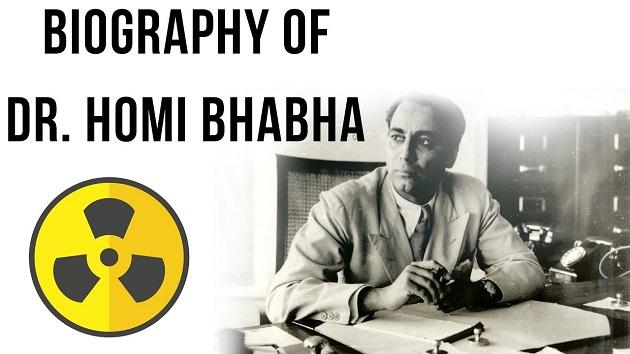Table of Contents
EARLY LIFE
- Homi Jehangir Bhabha was born into a wealthy and prominent industrial family, through which he was related to businessmen Dinshaw Maneckji Petit, and Dorabji Tata.
- He was born on 30 October 1909, in an illustrious family with a long tradition of learning and service to the country. His father was Jehangir Hormusji Bhabha, a well known Parsi lawyer and his mother was Meheren.
EDUCATION
- He received his early studies at Bombay’s Cathedral and John Connon School and entered Elphinstone College at age 15 after passing his Senior Cambridge Examination with Honors.
- He then attended the Royal Institute of Science in 1927 before joining Caius College of Cambridge University. This was due to the insistence of his father and his uncle Dorab Tata, who planned for Bhabha to obtain a degree in mechanical engineering from Cambridge and then return to India, where he would join the Tata Steel or Tata Steel Mills in Jamshedpur as a metallurgist.
- In 1932 he passed the Mathematics Tripos, again with first class and he received his doctorate degree in nuclear physics from the University of Cambridge in 1934.
NUCLEAR PHYSICIST
- In January 1933, Bhabha received his doctorate in nuclear physics after publishing his first scientific paper, “The Absorption of Cosmic radiation”.
- The following year, he completed his doctoral studies in theoretical physics under Ralph H. Fowler.
- In 1935, Bhabha published a paper in the Proceedings of the Royal Society, Series A in which he performed the first calculation to determine the cross section of electron-positron scattering.Electron-positron scattering was later named Bhabha scattering, in honor of his contributions in the field.
RETURN TO INDIA
- In September 1939, Bhabha was in India for a brief holiday when World War II started, and he decided not to return to England for the time being.
- He accepted an offer to serve as the Reader in the Physics Department of the Indian Institute of Science, then headed by renowned physicist C. V. Raman.
- With the help of J. R. D. Tata, he played an instrumental role in the establishment of the Tata Institute of Fundamental Research in Mumbai.
CAREER
- Bhabha played a key role in convincing the Congress Party’s senior leaders, most notably Jawaharlal Nehru to start the ambitious nuclear programme.
- As part of this vision, Bhabha established the Cosmic Ray Research Unit at the Institute, began to work on the theory of point particles movement, while independently conducting research on nuclear weapons in 1944.
- In 1945, he established the Tata Institute of Fundamental Research in Bombay, and the Atomic Energy Commission in 1948, serving as its first chairman.
- In 1948, Nehru led the appointment of Bhabha as the director of the nuclear program and tasked Bhabha to develop the nuclear weapons soon after.
NUCLEAR ENERGY
- In the 1950s, Bhabha represented India in IAEA conferences, and served as President of the United Nations Conference on the Peaceful Uses of Atomic Energy in Geneva, Switzerland in 1955.
- Soon after the Sino-Indo war, Bhabha aggressively and publicly began to call for the nuclear weapons.
- Bhabha gained international prominence after deriving a correct expression for the probability of scattering positrons by electrons, a process now known as Bhabha scattering.
- He was awarded Padma Bhushan by Government of India in 1954. He later served as the member of the Indian Cabinet’s Scientific Advisory Committee and provided the pivotal role to Vikram Sarabhai to set up the Indian National Committee for Space Research.
MYSTERIOUS DEATH
- Homi J. Bhabha died when Air India Flight 101 crashed near Mont Blanc on 24 January 1966.
- Many possible theories have been advanced for the air crash, including a claim that the Central Intelligence Agency (CIA) is involved in order to paralyze India’s nuclear program.
- Gregory Douglas, a journalist who taped his interviews with former CIA operative, Robert Crowley, for four years, recorded their telephonic talks and later published their transcribes in a book called Conversations with the Crow. Crowley writes that CIA was responsible for assassination of Homi Bhabha.
























 WhatsApp
WhatsApp